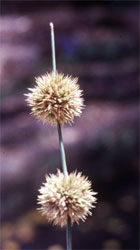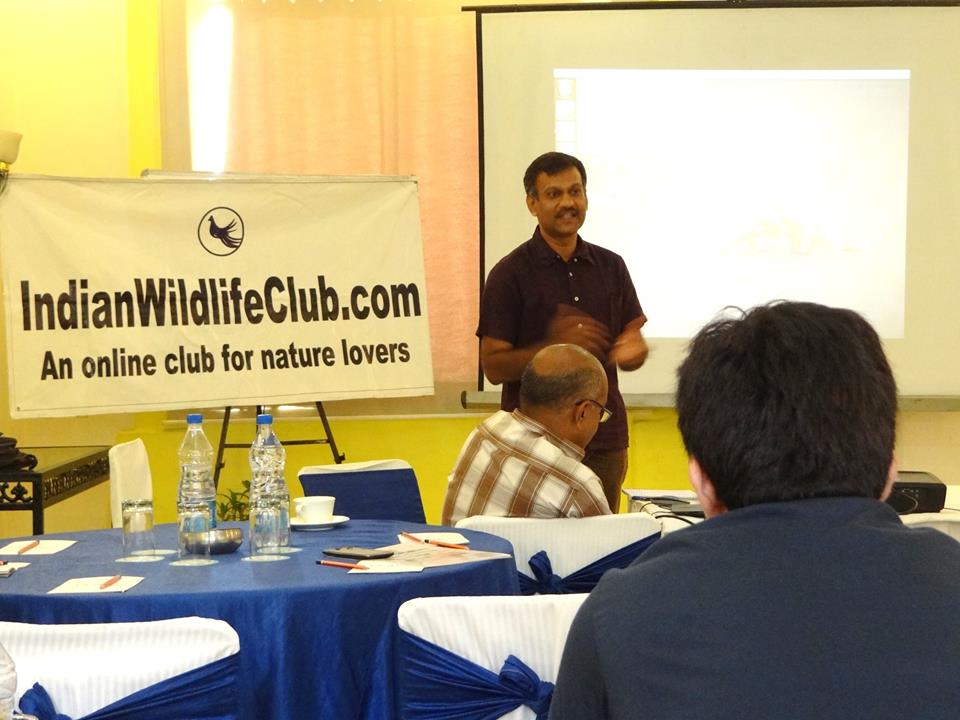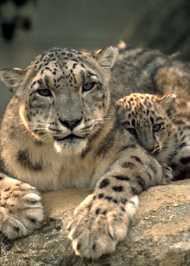Amazing Facts About Wildlife
 There are more than 1000 different kinds of bamboos in the world. There are no bamboos found in Europe. The worlds largest reserve of bamboos consisting over
115 species both wild and cultivated exists in India. There are more than 1000 different kinds of bamboos in the world. There are no bamboos found in Europe. The worlds largest reserve of bamboos consisting over
115 species both wild and cultivated exists in India.
The bamboo species have great variation in the thickness of their culm (woodiness of stem) The culm thickness hill bamboos is lesser than a pencil, while Giant bamboo of
Burma can grow 37 m tall with 0.25 m width. It is the largest of all bamboos. The inter nodes of giant bamboo are large enough to be used as petrol or water containers.
Most of the bamboos are erect and quite a few are scramblers and even climbers. One of the climbing bamboos stretching over the crowns of tall forest trees yield fleshy fruits
full of starch.
Nearly all species of bamboo are green when fresh but some like Tiger bamboo are of a beautiful golden colour with green and black stripes.
The growth of bamboo is remarkable. During monsoon, new shoots emerge from the underground rhizome (roots). Elongation of shoots takes place gradually in the initial stage
and then become so active as to grow in leaps. In some tall species, they may grow about one meter in a day! If one has patience to sit for hours by the side of growing clums one can see the actual process of lengthening.
The Pitcher bamboo, which has short, constricted inter nodes and forms bulges or pitchers in a series. This curio is a worthwhile introduction in any botanical garden.
In many bamboo species flowering occurs after 20 or 60 years; in several others it may not occur until 120 years after the last flowering. In some species, however, the interval
may be shorter, 3 years or so; a few may flower even annually. When general mass flowering takes place the spectacle can be breath-taking; it is all the more exciting when we consider that this flowering takes place only once in its lifetime. No matter where
the species grows or whatever be the age of the clump, it happens all so spontaneously. The whole plant, clum, branches and sometimes even rhizomes are transformed in to flowers. It looks as if, before death, the bamboo sacrifices everything to the production
of flowers and fruits.
The tender shoot is very delicate and luscious but at the same time is poisonous as it contains hydro-cyanic acid. These shoots are of great delicacy and serve as supplementary
food. The poisonous effect is destroyed after boiling. Bamboo shoot is then cooked and pickled.
Bamboos have age-old connections with the material need of man are fascinating to the artist, poet, the craftsman and the scientist. The qualities which make bamboo so versatile
are the strength of the clums, their straightness, lightness combined with hardiness, range in size, abundance, easy propagation and short period of attending maturity. Bamboo is a material the is sufficiently cheap but may not be plentiful to meet the vast
need of the human population from child' s cradle to the dead man' s bier.
 By
By
Prashant Mahajan, senior Education Officer, BNHS, Mumbai
To understand more about how the bamboo is part of the lives of people in North East India,click
here.
|
Answers To Quiz Of The Month
All correct answers to the 'Snake Quiz' was sent by
Roopam Dhawan from Chandigarh.
Congrats!!
Correct answers are written in red.
A new
quiz on Butterflies is online now.
| 1. Howmany species of snakes are there( approx.)?
|
2. Snakes haveevolved from and are relatives of...........?
| O lizards |
O eels |
O earth worms |
|
3. Why does the cobra spread its hood ?
| O hypnotise the prey |
O to impress the female |
O to scare enemies |
|
4. Snakes have novisible ears; Can they hear airborne sounds?
| O No, Probably most snakes hear nothing. |
O Partly, they can hear other snakes hissing |
O Yes |
|
5. The largest Indian snake is the
| O King Cobra |
O Python |
O Viper |
|
6. The only snake to make a nest to lay eggs is,
| O Rat snake |
O Rattle snake |
O King Cobra |
|
7. Snakes use their..............................to move about.
| O spinal cord |
O scales |
O muscles |
|
8. Snake venom is produced by modified ............................?
| O thyroid glands |
O saliva glands |
O pancreas |
|
9. Thelatin name for King Cobra is 'ophiophagus hannah' which means.............?
| O snake eater |
O full of venom |
O snake with a hood |
|
10. ................% of all snakes species are venemous
| O 100% -all are more or less venemous |
O 1% |
O 30% |
|
|
News and Views
NEWS.........
Susan Sharma, Founder, IndianWildlifeClub.com
Mr. Sanjay Singh, District Forest Officer, Shabad, Bihar was abducted and killed on February 15, 2002. The killers are suspected to be naxalites or illegal miners against
whom the conscientious DFO took action. Jharkhand is home to the Palamau tiger Reserve and Dalmia Wildlife Sanctuary.
Can the forest department work in isolation to protect the forests and wildlife?
At the symposium on elephant conservation, held in December 2001at Hardwar, Mr. S.S Bist, Director Project Elephant, made a passionate plea for relaxing the provisions of
the Wildlife ( protection Act), 1972. To quote him' the policy and law regarding the Asian elephant in India has not kept pace with field realities'.
In 1977, elephant was included in Schedule I of the Wildlife Protection Act. This meant that Ganesh, the long tusker from Latehar, Bihar, who killed 42 people and 472 cattle
could not be caught. Illegal mining blasts and denuding of forests drove the peaceful herds from Palamau to seek nutrition in the crop fields nearby causing increased resentment among the farmers.
Asian elephants are different from other endangered species in as much as they cannot be confined within the traditional protected areas. Elephant migration into other forest
areas take place through forest corridors. These corridors need to be free of cultivation , mining, grazing etc if elephant -human conflicts are to be avoided. Many of these corridors are not under the Forest department. Issues like shifting cultivation and
mining call for suitable amendments in the existing land-use policies.
In the meantime Mr. Bist recommends amendment to the Wildlife (Protection act) to permit capturing of such elephants for domestication and trans location. We feel that such
captures , besides removing the immediate threat to crops and life, will also project the Forest Department as ensuring conservation with a humane face.
At any rate, there is need for immediate action if more deaths of misguided avenges are to be avoided.
Indian Wildlife Club members can post their views on the above issues in the Club Blog. The team at IndianWildlifeclub would appreciate it very much if comments on all the
articles appearing in the e-zine are posted on the Club Blog. This will help us improve our content and reach out to more wildlife lovers all over the world.
Let that be our forum to interact with each other! To join click
here.
.........VIEWS
Saraswati Kavula, member, Indianwildlifeclub.com
( Saraswati has an egroup called earthscapes@yahoogroups.com. All are welcome to join the group.)
On plastic:
When I tell somebody we mustn't use plastic they look at me incredulously. Everybody is aware in the big cities that plastic is harmful, it is banned in many metros in india,
still nobody bothers to follow. We used to carry our own baskets and bags for shopping earlier. The grocer was a small store guy who would pack everything in old newspaper and fasten cotton thread to keep the packet holding. On returning home we used to just
empty the groceries into their respective containers and the packing ended in waste basket and well bio-degraded in no time. That was not long ago. Just a decade of years and see the sea change. Now we walk hands free to the bhajiwalla and to our superstores.
everything is plastic packaged and then placed in a polythene cover and all this adds to the rubbish generated everyday. And none of this will degrade in a million years. So what do we have- great dumps of plastic in landfills and plastic covers that decorate
the beautiful countryside like eyesores! Not to speak of global warming!!! Of course we all complain about the extremeties in the weather that is taking place and the water shortages, but we can't live without our plastic bags. Habits can be made. Nobody likes
to brush at night. But once it becomes a habit you can't get sleep without brushing!!!
Here is an after thought:
In a world polymerised with plastic implants, Happiness comes in vials and Pills.
Here is a site which I found very relevant and useful
http://www.obviously.com
Susan
|
Story Of The Month
If you are looking for a place off the beaten track for your next holiday, Bhitarkanika is definitely worth a look. The Bhitarkanika group of islands in Northern Orissa offers
not just great beaches but exciting trekking trails through forests teeming with wildlife.
Bhitarkanika is Orissa`s only and probably country`s second viable mangrove eco-system. Here, innumerable criss-crossed tidal inundated creeks provide
the last refuge to the already endangered salt water Crocodile (Crocodile Porosus)
The Bhitarkanika islands can be reached from Bhadrak which is on the Calcutta- Madras railway line. A night train from Calcutta`s Howrah station will reach Bhadrak( 297 km)
at dawn. From Bhadrak head for Chandbali ( 42km) by jeep. A motorboat will take you from Chandbali to the island of Dangamal which has a Forest Rest House with basic amenities. You need to book your rooms here beforehand.
The boat ride to the Forest Rest House at Dangamal is enchanting in itself. The motorboat chugs down the Baitarini river towards its confluence with the brahmini river, then
swings into a creek where the waters are calm but full of crocodiles, some 20ft in length.
Kingfishers ( many varieties), cattle egrets, herons, sandpipers, plovers, white ibis, drongos, swallows and many other birds can be seen flying across the creek. The Forest
Rest House at Dangamal island has tall coconut trees around it and is close to a large marsh at the edge of the jungle. The nearby forest has wild boars, hyenas, water monitors and deer.
A 45-minute boat-ride from Dangamal brings you to Bird Island, where you can watch migratory birds from a watchtower.
Bhitarkanika island itself lies across the river, opposite Dangamal. Treks through the forests here are usually rewarded by wildlife spotting. Colorful butterflies flutter
about, small pools emerge out of the wilderness, and at the end of the trail is a ruined temple.
Four hours away from Dangamal by motorboat, is Ekakula-an island away from the estuary and on the Bay of Bengal. Brilliant blue sea and a quiet beach! Observe carefully and
you may spot pug marks of wild boars, jackals and hyenas. Early morning and evening, dolphins can be spotted in the sea.
Ekakula has a forest rest house too. So has Habalighati or Garhimata which is an hour`s walk on the beach from Ekakula. Stay at Garhimata if you want to watch Olive Ridley
turtles-for Garhimata is famous as the nesting ground of Olive Ridley turtles.
Getting there:
By train from Howrah ( Calcutta) to Bhadrak ( 297 km). Closest airport- Bhubaneswar; Bhubaneswar to Bhadrak (154 km.). From Bhadrak by jeep to Chandbali. Get entry permits
from Asst. Conservator of Forests, Chandbali before entering the Bhitarkanika National Park.
Accommodation
Best time to visit: October-March</P
:Accommadation at
Dangmal, Gupti, Ekakula and Habalikhati is to be booked in advance from the Wildlife Warden at Rajnagar( in District Kendrapara)
|
Tips On Beauty Without Cruelty
|
 Deepika Vohra served as the head of the Department of Beauty Culture at the International Polytechnic for Women at New Delhi. She also ran a beauty clinic
at Delhi's Vasant Kunj for some time from where she relocated to New York for five years. Exposure to the world capital of beauty and cosmetics gave her an opportunity to compare the Indian beauty industry with the razzle dazzle of the New World. Reading and
researching beauty culture has always been a hobby with her. The tips for beauty given below were selected from her repertoire of nature based recipes, which are time tested to deliver. Deepika Vohra served as the head of the Department of Beauty Culture at the International Polytechnic for Women at New Delhi. She also ran a beauty clinic
at Delhi's Vasant Kunj for some time from where she relocated to New York for five years. Exposure to the world capital of beauty and cosmetics gave her an opportunity to compare the Indian beauty industry with the razzle dazzle of the New World. Reading and
researching beauty culture has always been a hobby with her. The tips for beauty given below were selected from her repertoire of nature based recipes, which are time tested to deliver.
|
|
'Nature Never Did Betray the heart That Loved Her.'-Wordsworth
|
|
The present times herald a veritable victory over chemical cosmetics in the form of natural beauty aids. Joy, happiness and confidence for sure contribute vastly to your beautiful appearance.
A smooth supple skin is of course an added bonus. So, here are some tips to care for your skin through the seasons.
Basic skin types may be classified into five broad categories- normal, dry, oily, combination and sensitive skin. The skin is made up of protective
layers of cells supported by nerves, glands and blood vessels. Your skin lives and breathes. Cells move up to the surface where they are shed and replaced. This topmost layer is protected by the body's natural oil and moisture. It is essential to carefully
plan out a beauty routine to attain a flawless, petal-soft complexion.
The first step to your beauty routine is cleansing your skin. Cleansers are formulated to remove surface grime and dirt as well as dissolve stale make up
from the skin. A gentle massage will help to float out deep down make up and other impurities.
How do you recognize your skin type?
NORMAL SKIN ---
is finely textured with no visible pores, spots, or blemishes, soft and velvety to the touch, and unwrinkled. Normal skin has to be treasured and preserved, as it is liable to change, if neglected.
OILY SKIN ---
is caused by overactive sebaceous glands that give rise to large open pores. Larger pores, in turn, lead to blackheads, blemishes and acne. The appearance of blackheads and blemishes is due to clogged oil and dirt in the pores which is not removed instantly
by cleansing. Oily skin begins to have an oily shine within a few minutes after wash or make-up. This makes it difficult to hold make-up. However, oily skin has an advantage of ageing very slowly, but deep cleansing must be thorough.
DRY SKIN ---
is a sensitive skin type which comes in blotches, tends to peel off easily and feels tight after a wash. Lack of moisture results in dry skin and this skin type is more prominent around the eyes, mouth, lips, sides of mouth, and forehead. Cleansing, toning,
moisturizing form an integral routine of this type of skin. Dry skin is highly susceptible to diet, extremes in weather and harsh perfumed skin care products. Dry skin also has another disadvantage. Wrinkles appear faster giving you a prematurely aged look.
A generous application of moisturizer will produce a skin which would be on par with the 'enviable' peaches and cream complexion.
COMBINATION SKIN---
As the word 'combination' suggests it is mix of two different skin types on one face. More often this skin type is the result of a badly cleansed and neglected
skin. It is easily recognizable as it is oily down the T panel, that is the forehead, nose, chin. The skin gets this oily look down the T panel while the rest of the face appear and feel dry. Combination skin needs scrupulous cleansing. It is a good idea to
use a face mask for oily skin down the T panel and a mask for dry skin for the rest of the face. This method of treating the combination skin works ideally to give a perfect, balanced effect.
SENSITIVE SKIN----
This type of skin is extremely delicate and vulnerable. It is easily susceptible to freckles, itchy spots and blotches. Dermatitis and allergies caused by chemical cosmetics are common problems of a sensitive skin. It is best to discontinue the usage of strong
and harsh skin care products as well as perfumed creams and moisturizers.
|
MASKS FOR PROBLEM SKIN
Oily skin has the disadvantage of a perpetually shiny nose, a skin that hates make up and of course a tendency to large pores. Large pore skin does not look appealing at
close quarters and provides a base for blackheads and pimples. Here are some of the methods of shrinking open pores:
- Apricots combined with the pulp of tomato is an excellent pore shrinker.
- Extract juice of lettuce leaves, add 2 or 3 drops of lemon juice and use over the face; wash off with cold water.
- Saturate cotton wool with butter milk. Pat over the face and allow it to dry before rinsing off.
- A combination of equal quantities of tomato juice and butter milk is also an excellent pore tightener.
- Apple is a natural skin toner and helps to shrink pores and tighten and tone the skin.
- Potato is rich in vitamin C, helps cure pigmentation, uneven skin tones and tighten skin pores.
- Starch mask – this mask helps to make enlarged pores less evident and restore healthy glow to the cheeks. Ingredients are:
a. 1 tablespoon corn starch
b. warm water q.s
massage your face gently with little olive oil, then apply starch mask on the face and neck; leave the mask on for 20 minutes and rinse off thoroughly with warm water.
|
Deepika Vohra can be contacted at
deepika@indianwildlifeclub.com
|
Understand The Animals
Scientific Name: Panthera uncia
Home:
At high altitudes in coniferous forests of the Himalayan and Altai mountains to Mexico
Description:
Soft gray fur with dark black-brown spots, a yard-long furry tail, large paws
Status: Endangered
The snow leopard, also known as the Ounce, is found primarily in the mountainous regions of Central Asia--particularly in the Himalayas. This Animal can inhabit lands upto
20,000 feet high. The large cat hunts its prey through the rocky grasslands. The typical diet for this species is wild sheep(Bharal and Argali), goats(Markhor and Ibex), Musk deer, marmots, various species of rabbits and birds. The snow leopards most distinctive
characteristic is its beautiful, thick coat. This coat is grey in color, with brownish/yellow hues and black rosettes. The fur is long and woolly to protect this cat from the harsh climates of its habitat.
 The increase of human settlement in Central Asia has become a major threat to these animals. The increase of human population growth forces Snow Leopards
to compete with man and livestock for living space and food supply. The rapid deterioration of the Snow Leopard's habitat drives the animal to hunt domestic livestock for survival. In turn, herders are hunting Snow Leopards to prevent losses. Also the increase
of agriculture in this area disturbs the ecosystem which supports the Snow Leopard. The increase of human settlement in Central Asia has become a major threat to these animals. The increase of human population growth forces Snow Leopards
to compete with man and livestock for living space and food supply. The rapid deterioration of the Snow Leopard's habitat drives the animal to hunt domestic livestock for survival. In turn, herders are hunting Snow Leopards to prevent losses. Also the increase
of agriculture in this area disturbs the ecosystem which supports the Snow Leopard.
As a consequence to this, it is becoming more difficult for the Snow Leopard to maintain its existence. This poses as a major threat to the population of Snow Leopards. Although
the Snow Leopard and the Leopard have similar rosettes and broken-spot markings, the Snow Leopard's fur is quite unique.
The spots of this animal are not as well-defined as a Leopard's, and also they are spaced further apart. The fur of this endangered species is long and woolly to accommodate
for the harsh climates of its habitat. Because of the beauty of this animals coat, many are hunted for the sole purpose of fur-trading. Although the trading of their pelts has been banned in most countries, these gorgeous creatures are still being illegally
trapped and hunted.
photo taken fromhttp://www.pbs.org/kratts/world/eurasia/leopard/
Snow leopards have been spotted at heights as much as 6000 meters in summer. That's only a couple thousand meters short of climbing Mt. Everest! Snow leopards
are superb leapers.
They can spring and pounce on prey that's up to 45 feet away! Furry feet help snow leopards stay on top of the snow by providing a greater surface area . The fur keeps their
paws warm and dry, and provides some snow-traction too! In India, the elusive snow leopards have been photographed and filmed by the Bedi Brothers.
Contributed by Richa Maurya, member, IndianWildlifeClub.com
|
Zoo
 Toby Ninan retired from Delhi Zoo about two years back. With his varied experiences with the wild animals in the zoo, he is the right person to direct your queries to. Hear what Ninan has to say about his life and chosen career!
Toby Ninan retired from Delhi Zoo about two years back. With his varied experiences with the wild animals in the zoo, he is the right person to direct your queries to. Hear what Ninan has to say about his life and chosen career!
Our hippo would soon be a Mamma! Something that we all looked forward to.
I had only seen a baby and momma from the safe comfortable confines of a jeep with plenty of good food and cold beer inside me.
This was all different-only me, the compounder, Papa and Momma inside the open enclosure. It was evening and there was no sign of baby making his or her appearance. Momma
had been duly separated as I did not know how Pop would react towards the new arrival. The water in Momma's tank had been reduced to a mere 9 inches so that it would give a cushion without drowning the baby falling from a height of about 21/2 feet from the
standing mom.
The whole day there had been crowds to keep us all company and everyone was curious to know how the usual playful hippo who used to frolic with Poppa, was now standing still.
Her keeper's effort to offer her favourite tidbits, which used to be welcomed with a wide-open mouth, was now greeted with painful straining.
Well the evening shadows were coming on and it would soon be dark, which meant that after some time we would not be able to offer much help.
It was time to act while there was still shimmering light. We, the compounder (the zoo vet was out), keeper and myself realized the life of our hippo depended on some immediate
help from our side.
All three of us jumped in and coaxed out the huge Momma from her tank. Then we resolutely went to work.
I admit I was wary about how mom would react when I put my hand-after they had been duly greased and disinfected-into mom's backside. After feeling about I could sense that
the baby was 'placed' wrongly and had to be straightened out. Well, a series of pulls and pushes did the trick and I could feel the baby coming out into this evil world. We were all surprised and relieved that Momma was very cooperative and stood still in
spite of my feeling all around her insides. She was aided by the music of encouraging words by her keeper. His continuous coaxing gave us all a feeling of well being and a foreknowledge that everything would turn out fine.
Soon baby realized his time inside mamma had come to an end and he presented himself, all thirty kilos, to the utter relief of all the 'midwives' present. Kaaba, that is
mamma mia, soon took over and gave junior a thorough licking. The glistening young man was seen drinking mouthfuls of warm milk, and here again was another bright new day that brought crowds of admiring people.
I will tell the story of how Kaaba came to us from Japan next month!
|